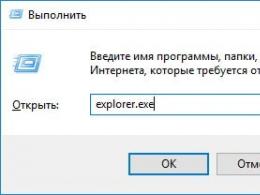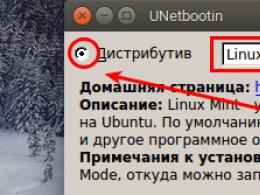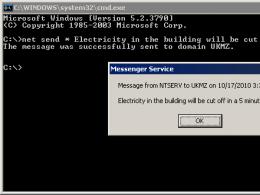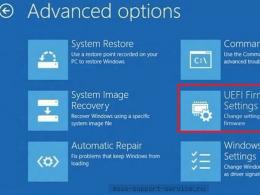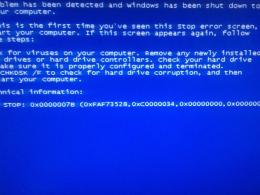We remake usb oscilloscope for android. Do-it-yourself oscilloscope from a tablet
This app has only been tested with samsung galaxy GT-i5700 Spica (Android 2.1)
The PIC33FJ16GS504 Microchip (datasheet) is used as an ADC for two inputs in the circuit. The processed data is transmitted to the phone via bluetooth module LMX9838 (datasheet).
Oscilloscope Specifications:
– Time per division: 5µs, 10µs, 20µs, 50µs, 100µs, 200µs, 500µs, 1ms, 2ms, 5ms, 10ms, 20ms, 50ms.
– Volts per division: 10mV, 20mV, 50mV, 100mV, 200mV, 500mV, 1V, 2V, GND
– Analog input (preamp dependent): -8V to +8V
The source codes for Bluetooth were taken from http://developer.android.com. This example consists of three files source code Java. And I completely copied "DeviceListActivity.java" which is used to find the deleted Bluetooth devices. I changed "BluetoothChatService.java" to remove all unnecessary things from there.

The rest of the work was basically porting my previous S60 work to Java language. It was difficult, but nevertheless, it was good example to learn JAVA programming.
Source codes and firmware for Android and PIC can be downloaded.
Here is the diagram. There is nothing special about it, everything is based on existing schemes.

Perhaps I did not choose the best microcontroller for this purpose, because. left unused conclusions. But I could only buy this and here is the best ADC.
If you want to change the range input voltage by changing the preamplifier to the opamp, the calculation is in the "adc.xmcd" file. Also, besides LMX, you can use other Bluetooth modules.
Original article on English language(translation: Ivan for cxem.net site)
Tablet computers and smartphones, when used correctly, become indispensable assistants in the professional activity of electricians. And we are talking not only about storing contacts or communicating with colleagues, but also about helping directly during measurements.
Modern measuring instruments often have built-in computers that process, store and organize data. At the same time, electricians also carry with them very powerful computing devices which are smartphones and tablet computers. These mobile gadgets are used in professional activities for communication, database storage, data and GPS navigation. But their capabilities are much wider and it would be useful to use smartphones and tablets to work with measurement results.
This provides the following main benefits:
- reducing the total cost and total mass of equipment available to an electrician;
- the presence of different data in one device, for example, the geographical location of an object and the results of measurements on it;
- no need for additional training, as the mobile device has user interface already well known to the employee.
Using a Bluetooth adapter
Mobile devices have wireless interfaces. By connecting the measuring device to a smartphone or tablet computer through such an interface and installing special software on the computer, you can get a mobile measuring complex.
But here comes the problem. The fact is that measuring devices are still equipped with an IR interface, and not Bluetooth. And the reason here is not only that the developers of measuring equipment are characterized by some conservatism. For data exchange between devices in the measuring complex, the RS-232C interface (known to users personal computers as a "COM port"), which is easily implemented in the simplest scheme IR adapter. RS-232C over Bluetooth requires software implementation virtual COM port, which greatly complicates and increases the cost of equipment.
However, it has been almost 10 years since the IR interface fell into disuse in mobile computers. How then to connect them with measuring devices? The problem is so urgent that when Agilent Technologies released the U1177A IR Bluetooth adapter that solved it in 2013, this product was immediately awarded the title of "Product of the Year" by the authoritative American magazine Electrical Constructions & Maintenance.
The U1177A adapter is designed to work with the Agilent Technologies U1230, U1240, U1250, and U1270 Series DMMs and U1210 Series Clamps.
Measuring only 39x71x37mm and weighing 60g, the device is mounted on the back of the multimeter (U1240 series multimeters require a special bracket sold separately), its IR sensor is applied to the measuring device's IR port window. The adapter supports the Bluetooth 2.1 protocol, the communication range can reach 10 m. The U1177A is powered by two AAA cells, they last for 30 hours of operation.
For the U1177A adapter, Agilent Technologies has developed two free apps on the Android platform: Mobile Logger and Mobile Meter. The first of them allows you to build graphs of parameter changes, as well as send SMS or e-mail when the specified events occur. By the way, Mobile Logger is also available in a version for computers running under Windows as a plug-in for standard Agilent Technologies software. The second application allows you to simultaneously monitor measurement data from three devices. A very valuable feature that allows you not to run from device to device and not to put an assistant next to one of the multimeters so that he reports the measurement data. Both applications are capable of running on both smartphones and tablets, however, for Mobile Logger, a tablet is preferable due to the large screen size.
CEM launches the DT-9979 Industrial Professional Multimeter with built-in Bluetooth. The Meterbox app is installed on an Android device that is used with the CEM DT-9979. In the event that a high-speed Internet connection cannot be established or this option is disabled by the user, the program performs statistical processing on a local mobile device. If you have an active high-speed Internet connection, automatically connect cloud services. The data is sent to the "cloud", where it is processed according to more complex algorithms than on a local device. Cloud services allow you to transfer to new level interaction of several specialists, as well as control in the company where such measuring instruments are used. Measurement data is recorded and stored in the "cloud", if necessary, the manager or other authorized specialist can easily access them from any place where the Internet is available.
Oscilloscopes based on Android devices
The so-called USB oscilloscopes have long been known, in which signal processing is carried out mainly by a computer, its display is also used to display information. With a data transfer rate of up to 480 Mbps for the USB 2.0 interface, and up to 5 Gbps in the more modern version of USB 3.0, there are no problems with transferring information from outdoor unit does not appear on the computer.
In order for a USB oscilloscope to be connected to a tablet computer or smartphone, the mobile computer must have a full USB port (host). The vast majority of smartphones and tablets do not have such a port; the oscilloscope can connect to them via Bluetooth and Wi-Fi interfaces.
Wi-Fi oscilloscopes are available, but their software is only designed to run on desktop and laptop operating systems. This is due to the high cost of such oscilloscopes, which limits their scope mainly to auto repair shops.
A less expensive option is an oscilloscope with Bluetooth. But here the problem of low data transfer rate through this interface arises. Theoretically, it does not exceed 24 Mbps, and in practice in most devices it is 1-2 Mbps. Hence the opinion of some experts was born that it is impossible to create a good oscilloscope with a Bluetooth interface.
However, since 2009, enthusiasts in different parts of the world have been creating their own models of Bluetooth oscilloscopes, fortunately, element base existed for this. And finally, in 2013, the small Hungarian company E-Way + began mass production of the BlueDSO oscilloscope with USB and Bluetooth interfaces.
The disadvantage of this oscilloscope, apparently due to the small throughput Bluetooth interface is the impossibility of full-fledged work with frequencies above 1 MHz. For radio engineering applications, this is a serious problem. But in relation to practical use in electrical engineering, frequency bands up to 1 MHz are quite enough.
BlueDSO fits in the palm of your hand. Unfortunately, it does not have autonomous power; when working with a desktop computer or laptop, power is supplied via USB. When working with mobile computer You need to connect a USB power supply to the device via Bluetooth.
Bluetooth-interface has a portable oscilloscope-multimeter CEM DT-9989. This self-powered oscilloscope is a self-sufficient device with a built-in display. The signal processing takes place mainly inside the oscilloscope, which allows, with an operating bandwidth of up to 10 MHz, to transfer data via Bluetooth at a speed of only 9.6 kbps. Cloud services are also available for the CEM DT-9989 through the Meterbox app.
Oscilloscope based on iOS devices
The American company Oscium produces two models of oscilloscope attachments - iMSO-104 and iMSO-204, which are connected to Apple iPhone And Apple iPad through the dock connector. The operating frequency band reaches 5 MHz. iMSO-104 has one and iMSO-204 has two analog channels. Along with this, set-top boxes have 4 digital channels.
Oscilloscopes, obtained by connecting the Apple iPad and the Oscium set-top box, can take “snapshots” of the screen and send them by e-mail, perform mathematical processing of measurement results.
"Snapshots" of the screen can be sent to management for a report or, for example, for consultation with a more experienced specialist. The disadvantages of Oscium products include a small input voltage range (from -40 to +40 V) and the absence of a current measurement mode. At the same time, non-standard input connectors do not allow connecting accessories that lower the measured voltage.
Using mobile device sensors
The sets of set-top boxes and corresponding software described in the article are united by the fact that nodes are added to the computer, on which the measurement accuracy depends. In this case, this is an analog-to-digital converter, precision voltage dividers, shunt resistors, etc.
In addition, there are a considerable number of programs that make measurements using sensors built into a mobile computer.
For example, it is proposed to measure using mobile device:
- magnetic induction (which allows you to search for objects made of magnetic metals located at a distance of up to 3 cm from the smartphone, by increasing the magnetic induction when approaching them);
- noise level;
- illumination.
For these measurements, the built-in compass, microphone, and camera of the mobile device are used, respectively.
It should be noted that such programs can only give a very rough estimate. Therefore, they should not be used in the professional activities of an electrician. At the household level, one can assess whether it makes sense to complain to the local authorities about the noise from the construction site or insufficiently lit streets. But even with this use, the programs will give any reliable estimate only if the calibration was carried out using a professional device. IN otherwise the data obtained may differ several times from the real ones, since the spread of the parameters of the components, for example, for a smartphone, is much greater than for a specialized measuring instrument. For example, the experience of using one of the iPhone light meter programs without calibration showed that it can give measurement results that differ up to 4 times from the real values.
Therefore, programs that carry out measurements with the built-in sensors of a mobile device are mainly useful as an illustration of the laws of physics, as a means of introducing the broad masses to scientific and engineering activities. But for professional measurements, additional devices must be connected to the computer.
Alexey VASILEV
A smartphone or tablet equipped with a camera can be of benefit to an electrician without installing any applications. By pointing the camera of a mobile device at a light source, one can detect pulsations that are invisible to the naked eye, but, nevertheless, have a negative effect on a person. If the ripple factor is more than 5%, the image will flicker on the display of the device. This property of a digital camera turns out to be very useful, for example, when choosing LED lamps. Ask the seller to show how the lamp shines, and check it with a smartphone for pulsation.
Overview of amateur radio programs for devices based on Android
Good day dear radio amateurs!
Today on the site, we will consider a rather interesting question - amateur radio programs for Android devices.
Recently, the electronic equipment market has been filling up at a good pace with inexpensive (mostly Chinese, but fairly decent quality) devices that use in their work operating system Android. Already now you can buy a good tablet from 5000 rubles. Therefore, I was interested in the question - are there any amateur radio programs for such devices? It turns out there is, and not a little. Below I will give you an overview of several such programs, and we will consider one of them in more detail.
So the first program is OscilPrime Oscilloscope Legacy
This program allows you to transform your Tablet PC into a two-channel low frequency oscilloscope:
The signal under study can be fed to the audio connector and through USB port. In addition, the program has a built-in sinusoidal signal generator. The sweep can be triggered both by the decline of the signal under study and by its front. The program is easy to use and has limited settings.
The next program is EveryCircuit(paid - 300 rubles) or EveryCircuit Free(free).
This program allows you to collect simple radio circuits on the tablet screen and simulate their work:

The program is simple and not difficult to understand. As a disadvantage, one can note the lack of a “Russian language”, a small base of elements and the high cost of the full version. But despite the shortcomings, the program will allow you to think through some aspects of circuitry when building simple devices.
As you can see, dear radio amateurs, progress does not stand still, programmers take care of us and release new programs. Even if they are not yet as developed as for "big" computers, but I think that soon "small" computers will catch up with their "big brothers" in amateur radio software.
All these programs (and not only them) you can download through “ Play Store” on your gadget.
And finally, I want to introduce you to another amateur radio program that deserves close attention, and not only by beginner radio amateurs.
The program is called ElectroDroid.
There are both paid and free version this program. The difference between the paid version - introduced additional features and no annoying ads.
ElectroDroid is a powerful set of tools and a reference for the electronics designer:

The program consists of several sections:
– payment
– pinout
– directory
– plugins
Let's start from the end - plugins. This function allows you to expand the capabilities of the program by adding new functions. All new plugins are installed inside the program.
Payment – this section designed for various amateur radio calculations. In the top picture you can see almost all the features of the program in this mode (part hidden at the bottom). As you can see, there is a fairly large variety of small subroutines for carrying out simple, but at the same time useful amateur radio calculations.
Tsokolevka. This section of the program presents the pinout of the most popular and commonly used connectors, wires and devices in amateur radio practice:

Directory. This section presents various reference data on radio elements, as well as tables of various data needed in amateur radio practice. This section will especially please lovers of PIC microcontrollers - reference data is collected here for almost all PIC microcontrollers (it's a pity, of course, that there is no such reference book for AVR microcontrollers):

You can also download this program on the “Play Market”, or (using the services of our hackers) download full version this program below:
(1.9 MiB, 10,325 hits)
This app has only been tested with Samsung Galaxy GT-i5700 Spica (Android 2.1)
The PIC33FJ16GS504 Microchip () is used as an ADC for two inputs in the circuit. The processed data is transferred to the phone via the LMX9838 Bluetooth module (datasheet).
Oscilloscope Specifications:
- Time per division: 5µs, 10µs, 20µs, 50µs, 100µs, 200µs, 500µs, 1ms, 2ms, 5ms, 10ms, 20ms, 50ms.
- Volts per division: 10mV, 20mV, 50mV, 100mV, 200mV, 500mV, 1V, 2V, GND
- Analog input (preamp dependent): -8V to +8V
The source codes for Bluetooth were taken from http://developer.android.com. This example consists of three Java source code files. And I completely copied "DeviceListActivity.java" which is used for searching remote devices bluetooth. I changed "BluetoothChatService.java" to remove all unnecessary things from there.

The rest of the work was basically porting my previous S60 work to Java. It was difficult, but nevertheless, it was a good example for learning JAVA programming.
Source codes and firmware for Android and PIC can be downloaded.
Here is the diagram. There is nothing special about it, everything is based on existing schemes.

Perhaps I did not choose the best microcontroller for this purpose, because. left unused conclusions. But I could only buy this and here is the best ADC.
If you want to change the input voltage range by changing the preamp on the op amp, the calculation is in the "adc.xmcd" file. Also, besides LMX, you can use other Bluetooth modules.
List of radio elements
| Designation | Type | Denomination | Quantity | Note | Shop | My notepad |
|---|---|---|---|---|---|---|
| MK PIC 16-bit | dsPIC33FJ16GS504 | 1 | To notepad | |||
| bluetooth module | LMX9838 | 1 | To notepad | |||
| U1 | Operational amplifier | TLV2372 | 1 | To notepad | ||
| U2 | Linear Regulator | LM1117-N | 1 | To notepad | ||
| D1 | rectifier diode | BAS16 | 1 | To notepad | ||
| D2 | Light-emitting diode | 1 | To notepad | |||
| C1, C6, C8-C10 | 10 uF | 5 | To notepad | |||
| C2 | electrolytic capacitor | 47uF | 1 | To notepad | ||
| C3-C5, C7 | Capacitor | 1 uF | 4 | To notepad | ||
| R1, R5 | Resistor | 47 kOhm | 2 | To notepad | ||
| R2, R6 | Resistor | 10 kOhm | 2 | To notepad | ||
| R3, R4, R7, R8 | Resistor | 2.2 kOhm | 4 | To notepad | ||
| R9-R12 | Resistor | 1 kOhm | 4 | To notepad | ||
| # | Resistor |
Nowadays it's hard to keep up the latest technologies radio electronics. A variety of electronic devices can now be modified to your liking from one to another. There would be desire and skill. Even from an old electronic clock, you can make a simple tester for many details of the electrical circuit, not to mention tablets and computers. Many radio amateurs and professionals often have to use accurate electronic devices, among which the oscilloscope is very popular. Such a good device is not cheap. Although it will not be difficult even for a radio amateur to make it with his own hands based on a tablet and an android.
What is an oscilloscope and its functions
 For those who are not particularly familiar with the operation of the oscilloscope and its visual views, I will explain. This is a device (in the old version of the mini-TV type, in the new - tablet design, etc.) that measures and monitors frequency fluctuations in electrical network. In practice, it is widely used by many specialized laboratories and professional radio technicians. Since the exact settings of many electrical appliances are made only with its help.
For those who are not particularly familiar with the operation of the oscilloscope and its visual views, I will explain. This is a device (in the old version of the mini-TV type, in the new - tablet design, etc.) that measures and monitors frequency fluctuations in electrical network. In practice, it is widely used by many specialized laboratories and professional radio technicians. Since the exact settings of many electrical appliances are made only with its help.
Its readings in electronic or paper form allow you to see sinusoidal waveforms. The frequency and intensity of this signal, in turn, allows determine the fault or incorrect wiring. Today we will look at a two-channel oscilloscope that you can assemble with your own hands based on the existing circuits of a smartphone, tablet and related software.
Assembling a pocket oscilloscope based on Android
The measured frequency must be audible to the human ear, and the signal level must not exceed the standard microphone sound. In this case, you can assemble an oscilloscope based on Android with your own hands without additional modules. Parsing the headset that has a microphone. If you do not have this headset, you must purchase a 3.5 mm four-pin audio plug. Solder the probes according to the connectors of your gadget.
Download software from the "Market", which will measure the frequency of the microphone input and draw a graph based on this signal. The presented options will be enough to choose the best one. After calibrating the application, the oscilloscope will be ready for use.
Pros and cons of the "Android" assembly:

Assembling an oscilloscope from a tablet
To stabilize the signal and expand the input voltage range, you can use the oscilloscope circuit for the tablet. It has been successfully used for a long time to assemble devices for a computer.
For this, KS 119 A zener diodes with 10 and 100 kOhm resistors are used. The first resistor and zener diodes are connected in parallel. Second and more powerful resistor connected to the input of the electrical circuit. This extends the maximum voltage range. Ultimately, additional interference disappears and the voltage rises to 12 volts.
A feature of the oscilloscope from the tablet is that it works directly with sound pulses and unnecessary noise (shielding) of the circuit and probes in this case will be undesirable.
Necessary software for building an oscilloscope based on tablet and android
To work with such a scheme, you need a program that can draw graphs based on the incoming data. sound signal. Many of these options are easy to find in the Market. With the help of them you can select additional calibration and achieve maximum accuracy for a professional oscilloscope from a tablet or other functional device.
Wideband frequency with a separate gadget
 A wide frequency range with the help of a separate gadget is achieved by its set-top box with an analog-to-digital converter, which provides signal transmission in digital version. This results in more high accuracy measurements. In practice, it is a portable display that accumulates information from individual devices.
A wide frequency range with the help of a separate gadget is achieved by its set-top box with an analog-to-digital converter, which provides signal transmission in digital version. This results in more high accuracy measurements. In practice, it is a portable display that accumulates information from individual devices.
Oscilloscope from an Android tablet
Bluetooth channel
Currently, electronic progress in stores appear consoles that perform the functions of an oscilloscope. They transmit a signal using a Bluetooth channel to a tablet or smartphone. Such an oscilloscope is a prefix, plug-in, tablet via Bluetooth has its own characteristics. The measured frequency limit of 1 MHz, the probe voltage of 10 V and the range of about 10 meters are not always enough for the professional range work activities. In such cases, you can use an oscilloscope - set-top box with data transfer using Wi-Fi.
Transferring data using Wi-Fi
Wi-Fi greatly expands the possibilities measuring devices. This type of information exchange between the tablet and the set-top box is especially popular. This is not a tribute to fashion but pure practicality. Since the measured information is transmitted without delay to the tablet, which instantly displays any graph on its monitor.
 A clear user menu allows you to quickly and easily navigate the controls and settings electronic device. BUT recording device allows you to reproduce and transmit information in real time and to all points for all participants in this process.
A clear user menu allows you to quickly and easily navigate the controls and settings electronic device. BUT recording device allows you to reproduce and transmit information in real time and to all points for all participants in this process.
Usually, along with a purchased oscilloscope - a set-top box, a disk with software. These drivers and software can be quickly downloaded to a tablet or smartphone. If there is no such disk, find this data in the application store or search the Internet on forums and specialized sites.
DIY USB oscilloscope circuit
Assembling a USB oscilloscope will cost you only 250-300 rubles and you can do it yourself.

The advantages of this device are its low cost, mobility and small size. But, unfortunately, there are more significant disadvantages. These are low sampling rate, the presence of a PC, low bandwidth and memory depth.
For professionals such electronic "toy" obviously won't fit. And for beginner radio amateurs, this is a very good oscilloscope simulator for acquiring certain practical skills.

